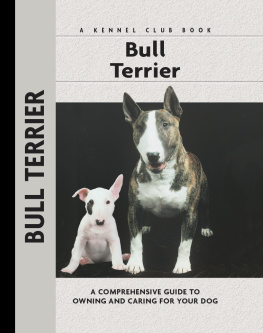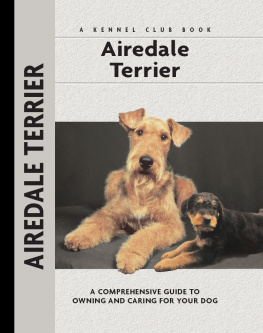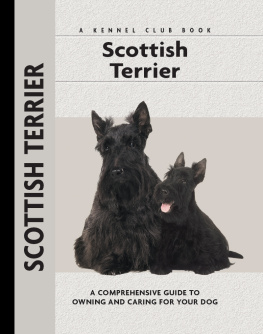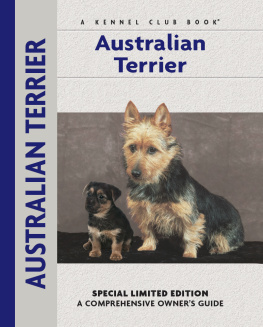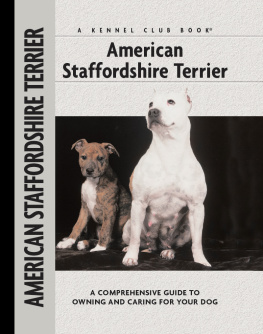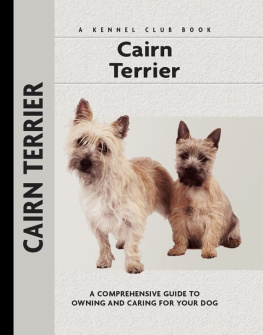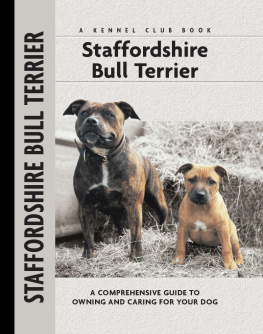Physical Characteristics of the Black Russian Terrier
(from the American Kennel Club breed standard)
Head: In proportion to the body. It should give the appearance of power and strengthshould be powerfully built with a moderatley broad and blocky skull.
Eyes: Of medium size and dark. Eye rims are to be black. The eye is to be oval shaped.
Ears: Set high and are rather small and triangular in shape. The front edge of the ear should lay close to the cheek. The length of the ear should reach the outside corner of the eye.

Neck: Thick, muscular and powerful. The length of the neck and the length of the head should be approximately the same.
Nose: Large and black.
Muzzle: Slightly shorter than the back skull. The length of the muzzle to the back skull is approximately a ratio of 4 to 5.
Teeth: Large and white. There should be full dentition. The bite should be scissors.
Lips: Full, tight and black. The gums have dark pigmentation.
Forequarters: Shoulders should be large and muscular, well developed with blades broad and sloping. The shoulders should be well laid back. The forelegs are straight and well boned. The elbows must turn neither in nor out while standing or moving. Pasterns are short and almost vertical.
Color: The only acceptable colors for the Black Russian Terrier is black or black with a few gray hairs.
Body: The whole structure of the body should give the impression of strength.
Tail: Set high, thick and docked with 3 to 5 vertebrae left.
Hindquarters: Viewed from the rear the legs are straight and parallel, set slightly wider than the forelegs. The hindquarters are well boned and muscular with good angulation. The stifle is long and sloping. The thighs are muscular. The hocks are well let down, long and vertical when standing.
Coat: Tousled, double coat. The texture of the outer coat is coarse. The undercoat is thick and soft. Length of coat should vary from 1.5 to 4 inches and cover the entire body.
Feet Large, compact and rounded in shape. The pads of the feet are thick and firm. Nails are short and dark.
Size: Dogs at maturity are between 27 inches and 30 inches. Bitches at maturity are to be between 26 and 29 inches.

Contents

A relative newcomer who has exploded onto the pure-bred dog scene, the Black Russian Terrier was developed to be an ideal all-around worker in its homeland. Learn about important kennels, foundation breeders and the range of breeds in the BRTs background, and follow its spread outside its homeland.
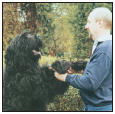
Acquaint yourself with the traits of the Blackie that have captivated a wide audience in just a short time. Look underneath the breeds striking black coat, handsome looks and massive size to discover a loyal, personable, versatile and athletic breed that requires the right kind of owner are you that owner?

Learn the requirements of a well-bred Black Russian Terrier by studying the description of the breed as set forth in the Russian standard and the American Kennel Clubs breed standard. Both show dogs and pets must possess key characteristics as outlined.
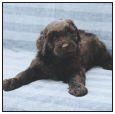
Be advised about choosing a reputable breeder and selecting a healthy, typical puppy. Understand the responsibilities of ownership, including home preparation, acclimatization, the vet and prevention of common puppy problems.

Enter into a sensible discussion of dietary and feeding considerations, exercise, grooming, traveling and identification of your dog. This chapter discusses Black Russian Terrier care for all stages of development.

By Charlotte Schwartz
Be informed about the importance of training your Black Russian Terrier from the basics of house-training and understanding the development of a young dog to executing obedience commands (sit, stay, down, etc.).

Discover how to select a qualified vet and care for your dog at all stages of life. Topics include vaccinations, skin problems, dealing with external and internal parasites and common medical and behavioral conditions.
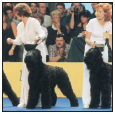
Enter the world of showing dogs. Acquaint yourself with basic show organization and handling, go beyond the conformation ring to learn about competitive performance events and meet the FCI: the World Kennel Club.
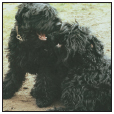
Learn to recognize and handle behavioral problems that may arise with your Black Russian Terrier. Topics discussed include separation anxiety, aggression, barking, chewing, digging, begging, jumping up and more.
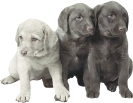
K ENNEL C LUB B OOKS B LACK R USSIAN T ERRIER
ISBN 13: 978-1-59378-348-8
eISBN 13: 978-1-62187-028-9
Copyright 2003 Kennel Club Books An Imprint of I-5 Press A Division of I-5 Publishing, LLC
3 Burroughs, Irvine, CA 92618 USA
Cover Design Patented: US 6,435,559 B2 Printed in South Korea
All rights reserved. No part of this book may be reproduced in any form, by photostat, scanner, microfilm, xerography or any other means, or incorporated into any information retrieval system, electronic or mechanical, without the written permission of the copyright owner.
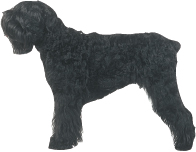
Photographs by Carol Ann Johnson, with additional photos by
Norvia Behling, T. J. Calhoun, David Dalton, Doskocil, Isabelle Francais, Bill Jonas, Mikki Pet Products and Alice van Kempen.
The publisher wishes to thank all of the owners of the dogs featured in this book, including Sandra and John Stables.
Illustrations by Patricia Peters.

Next page







